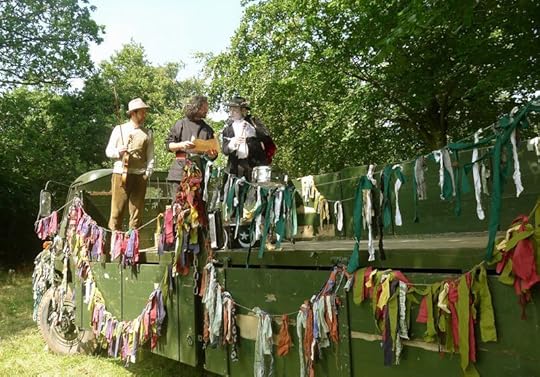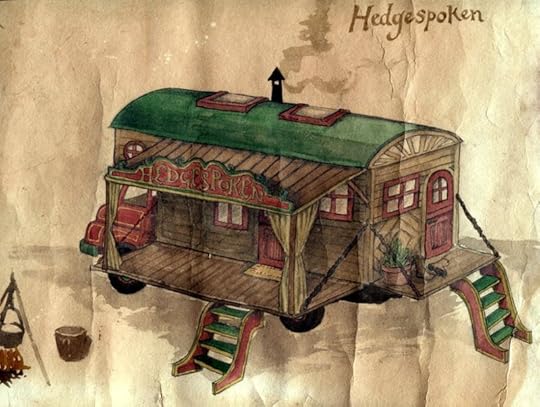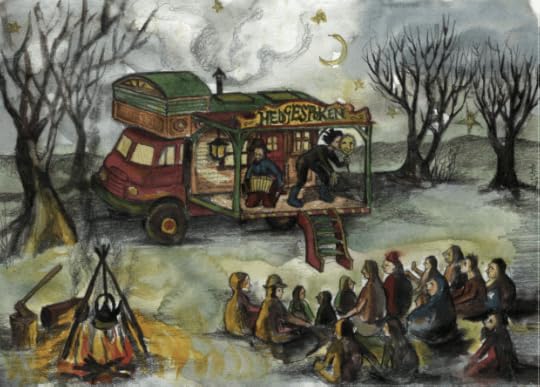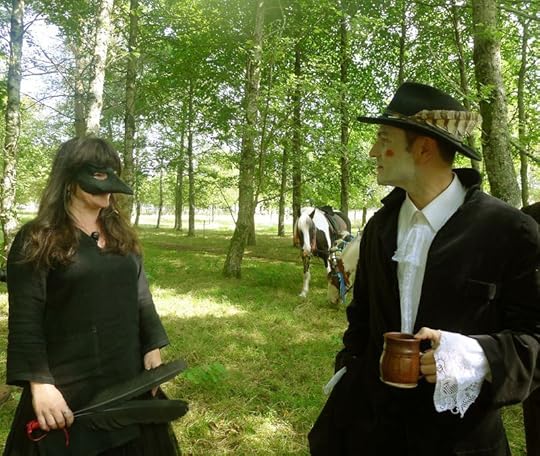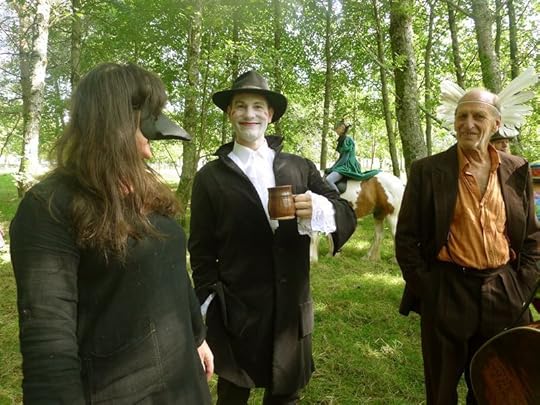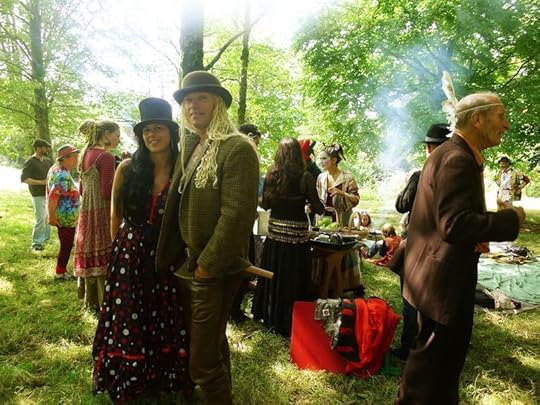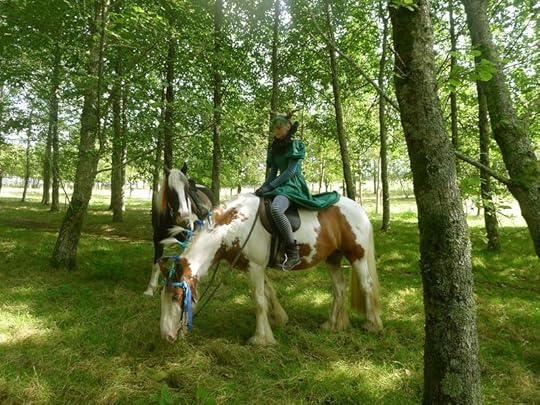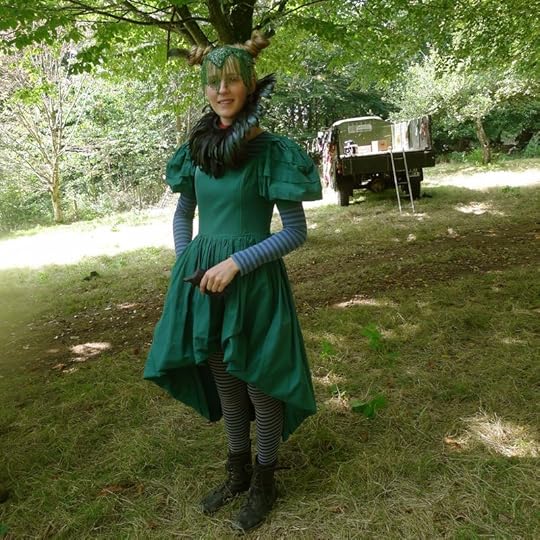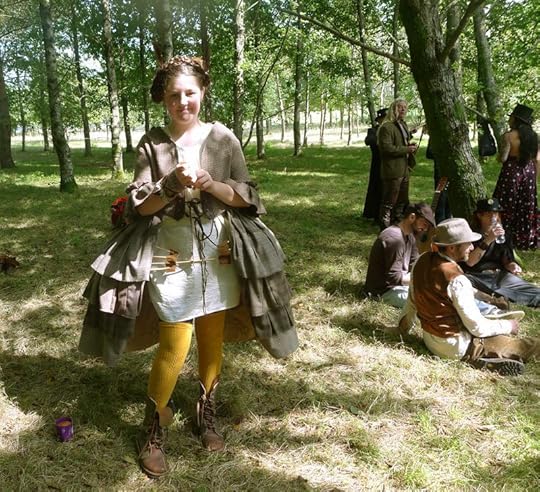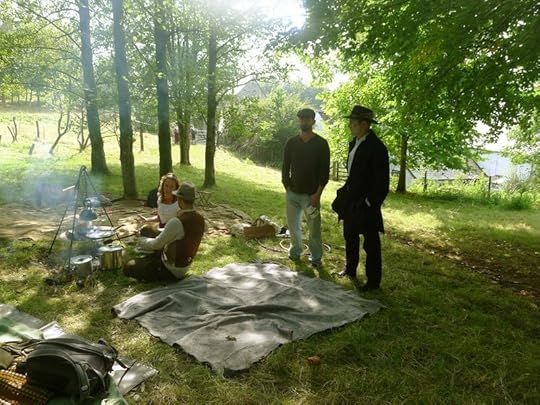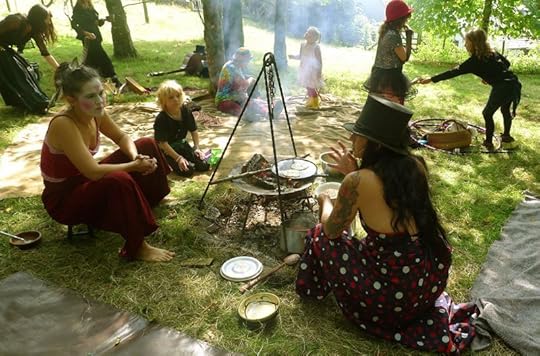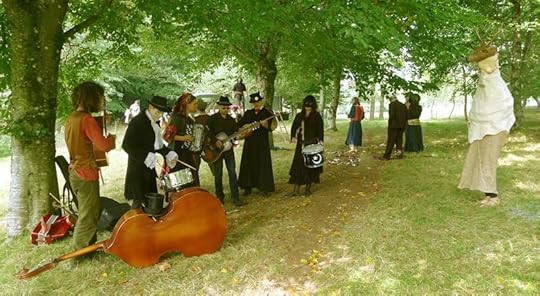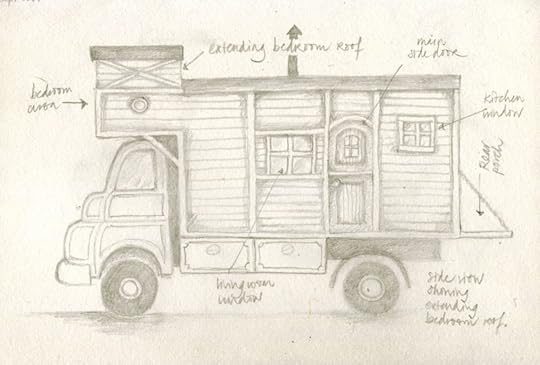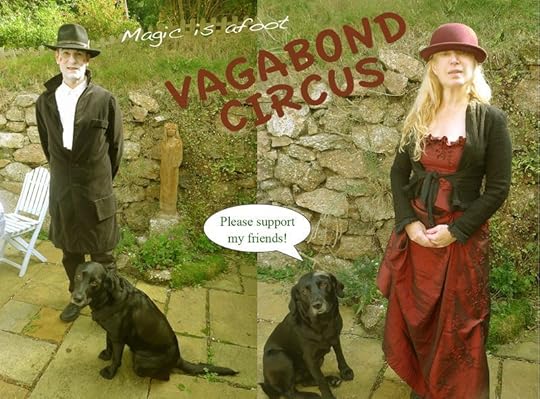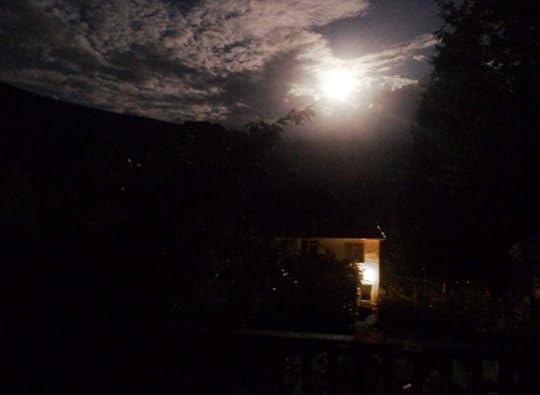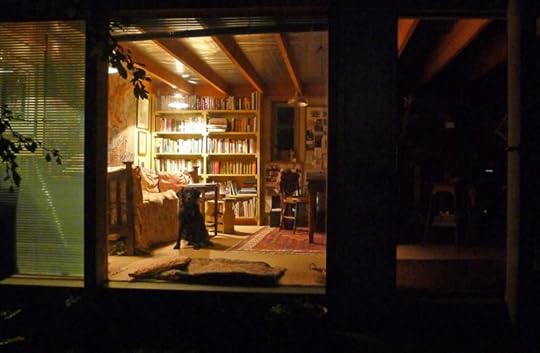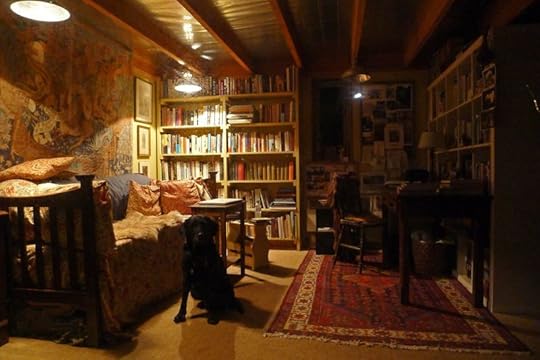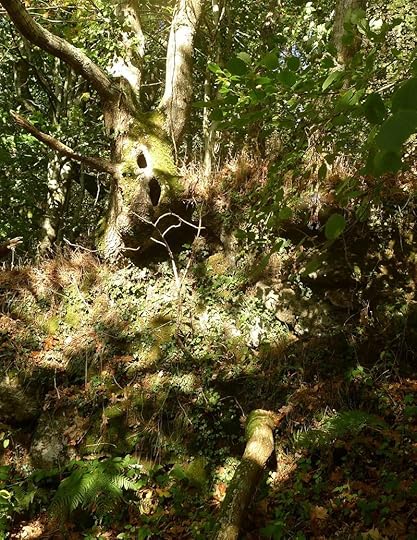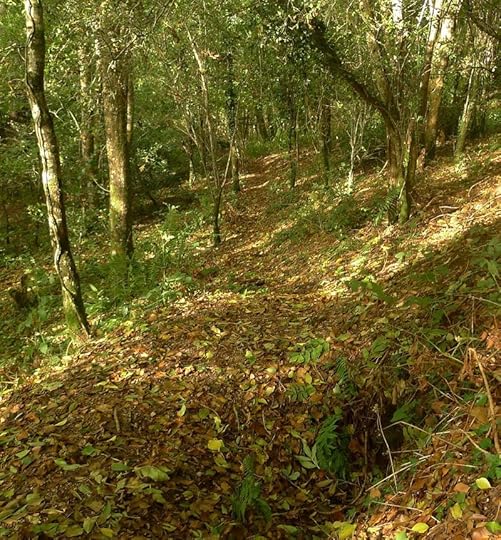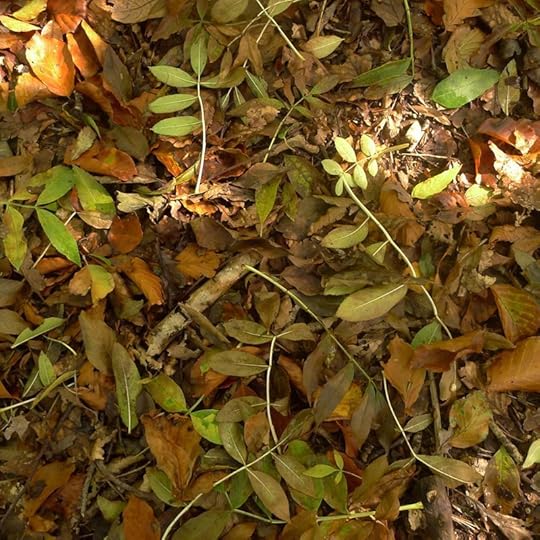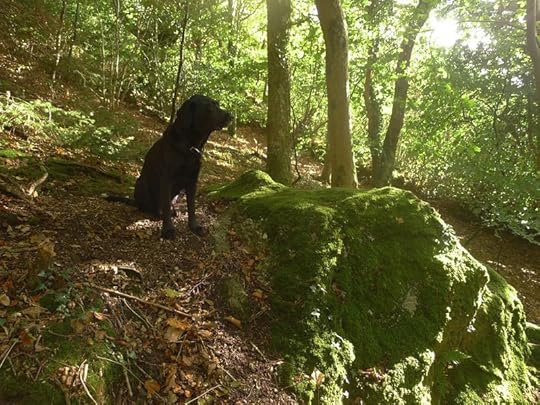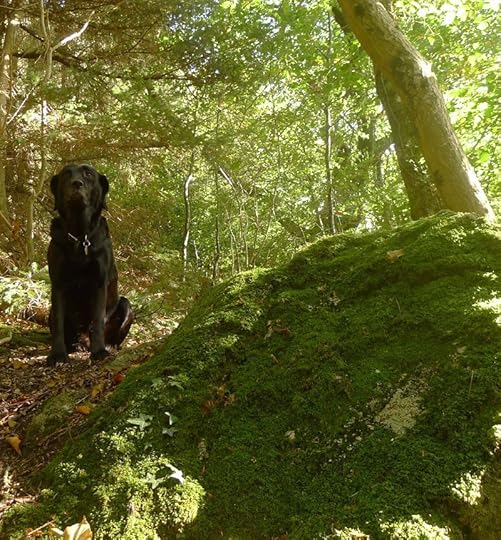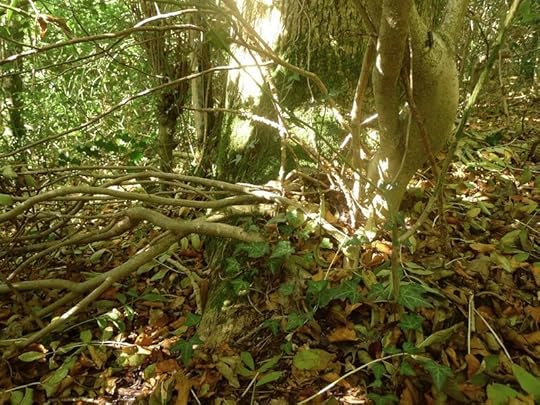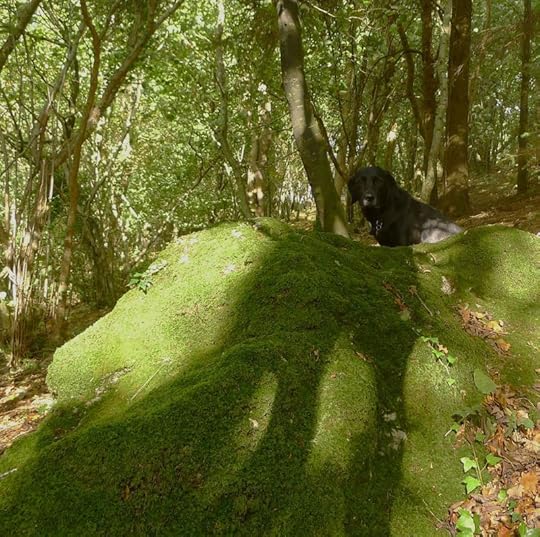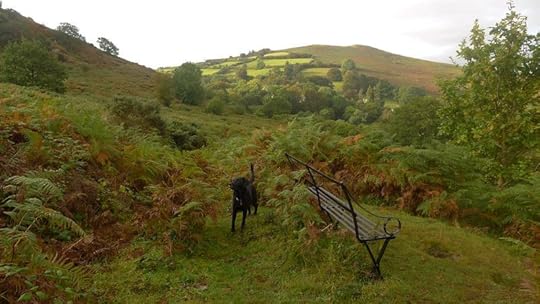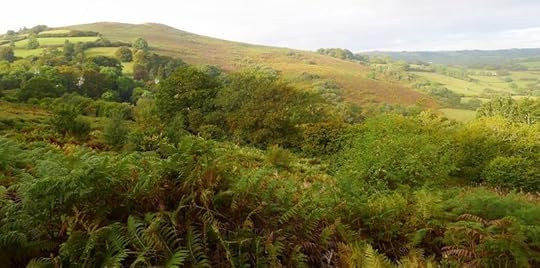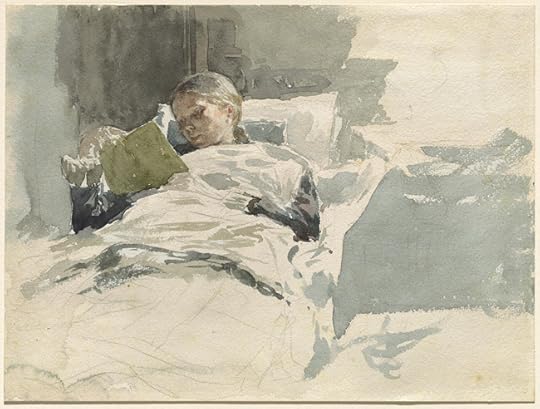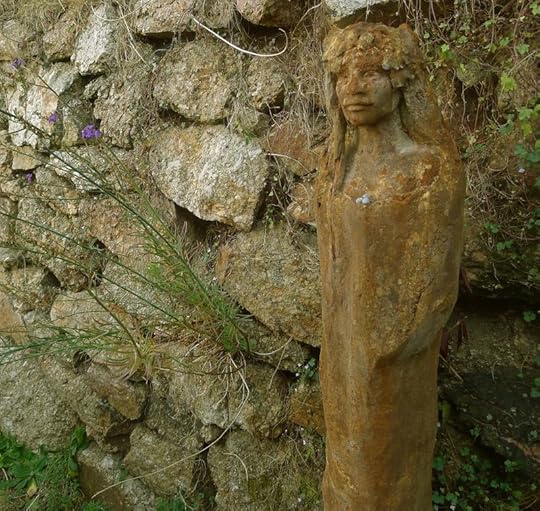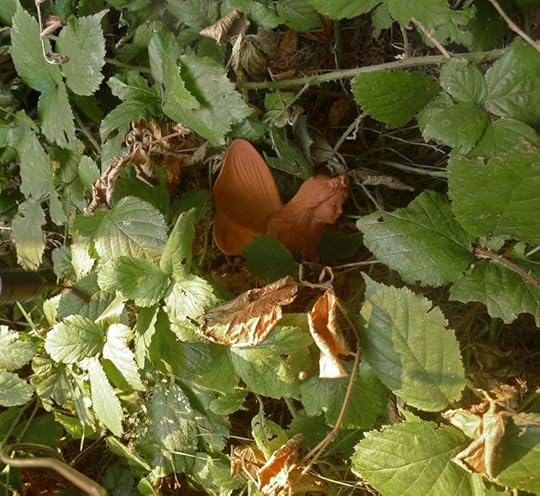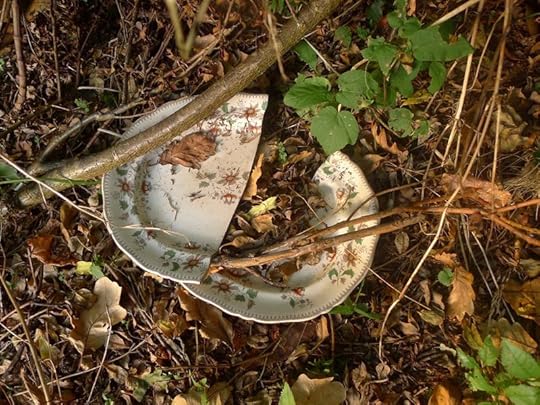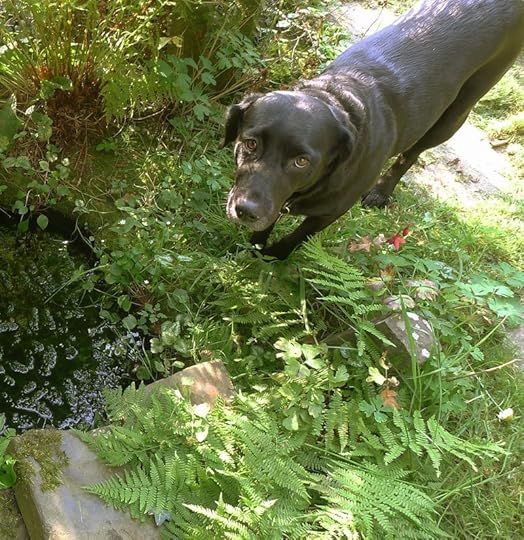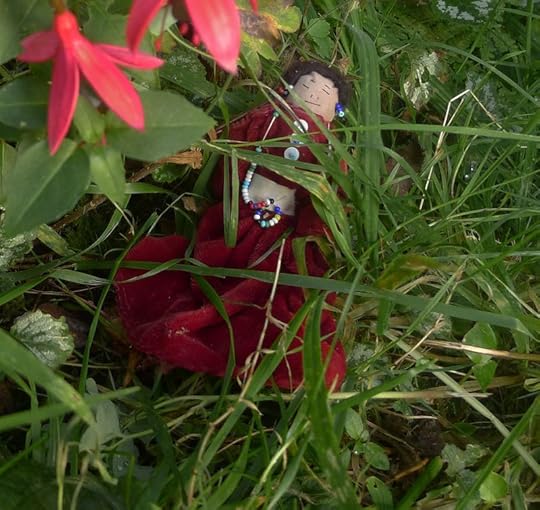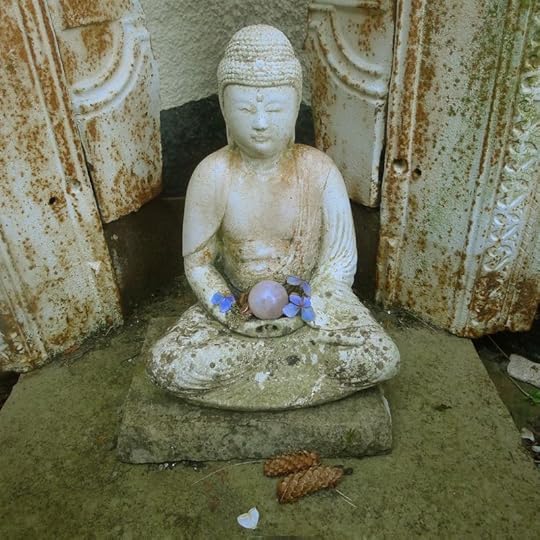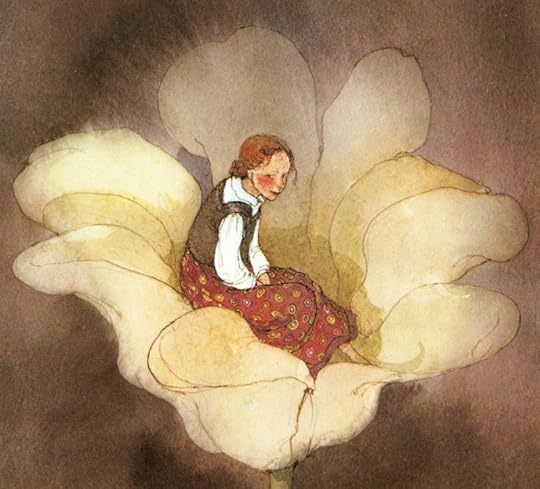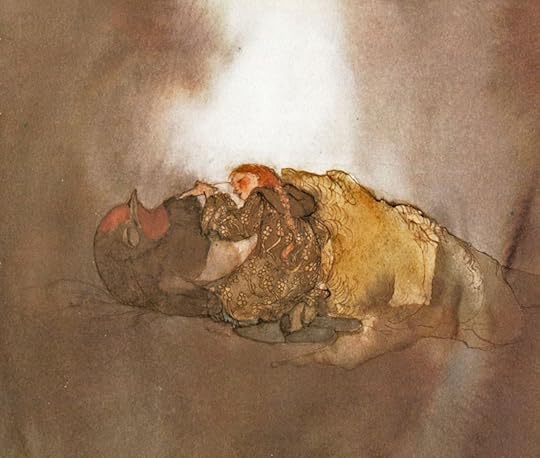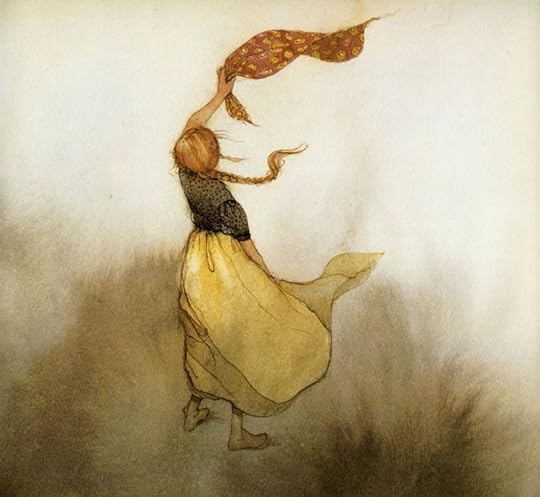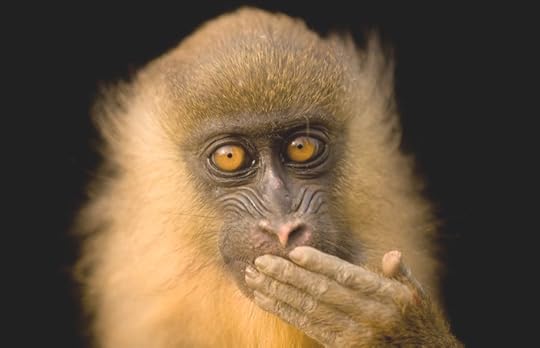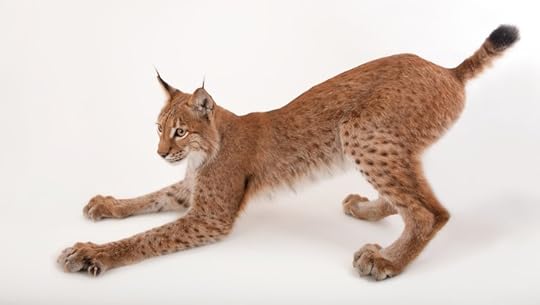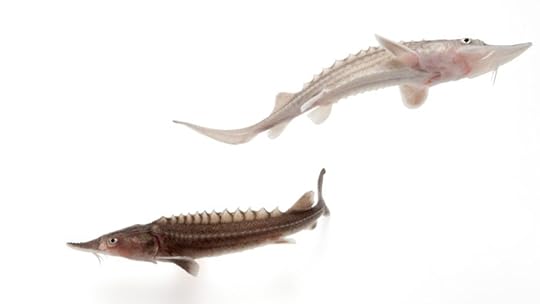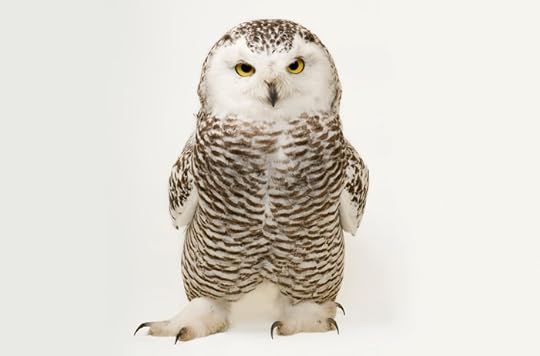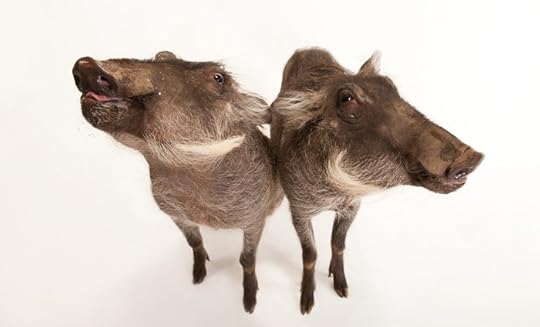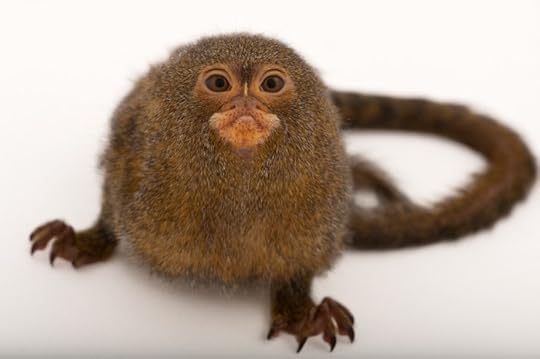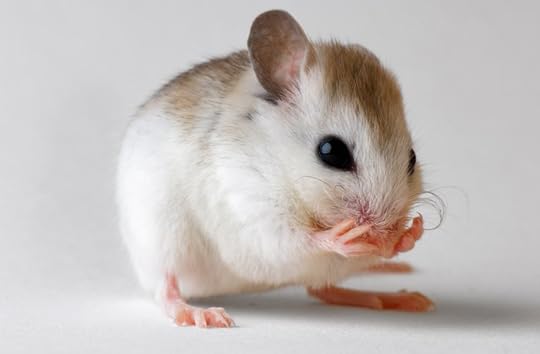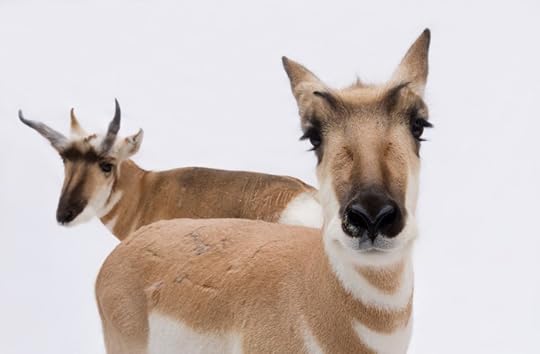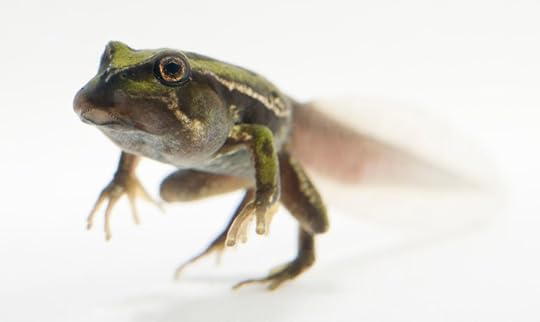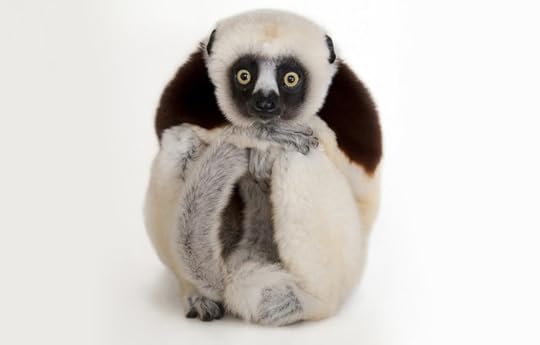Terri Windling's Blog, page 154
October 13, 2014
Roll up! Roll up!
(Watch in full screen mode for best effect.)
Last night was the great unveiling of the crowdfunding campaign for Hedgespoken: a magical new project created by artists/writers/performers Rima Staines and Tom Hirons.
A few weeks ago, they called for a Vagabond Tribe of friends and neighbors to gather 'round: raggle-taggle musicians and circus magicians; gypsy dancers, moonspinners, and fortune tellers; jugglers and clowns and children and crows; a faery harpist and gentle fey folk who arrived riding ribbon-bedecked ponies.
While we ate, drank, and made merry, filmmaker Annabel Allison gentle but firmly corralled us into the footage that would be used for Tom & Rima's Indiegogo campaign: music, dance, songs and laughter to summon the Little Gods of Luck, Travel, Coin, and Story. If the magic has worked, then you shall find yourself entirely unable to resist supporting their magnificent scheme for a Mythic Arts centre on wheels.
"With its drop-down stage, fancy awning and proscenium arch," Tom & Rima say, "Hedgespoken will serve as a stage wherever it goes. Whether it’s us telling tales and making mischief with handmade puppet shows, or it’s other actors, musicians or sword-swallowers using the stage-space as part of a Hedgespoken Travelling Show, our aim is to spread a little old magic by doing what we love.
"Hedgespoken has the wherewithal to act as a mini-theatre, a cabaret stage or acoustic music venue, anywhere. Perhaps your village green, or that disused urban space, wayside or park – Hedgespoken arrives, makes magic, plants seeds of imagination, and then leaves, in the tradition of wandering bards, travelling storytellers and itinerant puppet theatres and circuses that are so much part of our heritage."
Howard and I participated on the beautiful day of filming near Stone Lane Gardens, during which I snapped the photos here....
To help all this become reality, please put on your best motley clothes and head over to the brand new Hedgespoken website ... where you can learn more about what makes it so special, and how to contribute to the dream.
I'm biased, I confess, because I love Rima and Tom, and also because my husband has done puppet work with them and is likely to be involved with their theatre-on-wheels in the future. But biased or not, Hedgespoken is an extraordinary project, created by extraordinarily lovely people ... so I hope that all you Mythic Art fans out there will dig deep to contribute if you're able. Or, conversely, if your pockets are empty, please give Tom & Rima your blessing and help them by spreading the word.
Even Tilly is doing her bit.
October 12, 2014
Tunes (and puppets!) for a Monday morning
One of the loveliest things about growing older in a small Dartmoor village is watching the next generation grow up and take on the world themselves. Last month at the Chagford Film Festival, for example, we had the great pleasure of watching Toby Froud's first puppet movie, Lessons Learned (trailer above). Toby, the son of Brian & Wendy Froud*, grew up in Chagford and now lives with his wife and son in Portland, Oregon. Lessons Learned was made with funding from Heather Henson's Handmade Puppet Dreams, as well as a Kickstarter campaign, and has already won a slew of awards from film festivals in the US and Europe. Chagford puppet master William Todd-Jones performed the character of the "The Boy" in the film, and the music is by his daughter Lillian Todd-Jones and Chagford-resident-at-the-time Gordon Mills Jr. (Film theme song here.)
Lillian, too, is part of that younger generation of artists strongly influenced by their Chagford roots -- although in her case, music-making is just one part of her life, for she's also an Oxford-trained zoologist who has studied lions in the wild in Africa. In the magical video below, shot near Chagford, she teams up with Welsh singer-songwriter Siôn Russell Jones for "Guillotine." (More about the collaboration here.)
Below is one of Lillian's solo songs: "Perfect." This video, too, was shot near Chagford; and Lillian (who is also a visual artist) edited them both. "Perfect" starts out firmly in the folk music genre, but then strays into rock, punk, and blues. If you'd like a little more of her music this morning, go here for Lillian's cover of "As the World Falls Down" by David Bowie. (The song comes, of course, from the film Labyrinth, in which Toby Froud was the baby in the striped pajamas.)
Next:
Moving from Chagford to Cardiff, Wales (because I love this young man's music), here are two of Siôn Russell Jones' solo videos. The first is "So Long," from his 2013 EP of the same name, which was recorded on Dartmoor.
And last today: The very beautiful "Unholy Ghosts" (which makes me think of the Mock Avenue Studio in Bordertown). It, too, comes from the So Long EP.
If you'd like a little more of Siôn's music, go here (a particularly gorgeous combination of singing and song-writing) and here. There's a Cute Dog Alert on the last one.
* And speaking of the Frouds, Brian and Wendy have a gorgeous new book out, Faeries' Tales.
October 10, 2014
Mysterious by moonlight
The end of the Celtic year approaches. The days have grown crisp and the nights have grown cold. This week, Howard stoked up the old Rayburn stove that sits in our kitchen hearth; it will be the beating heart of our house from now through the winter, until spring. I wake up to darkness, make coffee, feed Tilly, then climb the 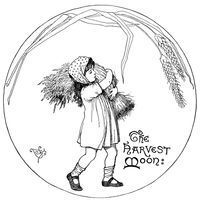 hill to the studio on a path lit only by moonlight and stars. I will miss summer's warmth and ease and wide-open doors, but autumn has its pleasures too: The tang of woodsmoke. The warmth of quilts. Fresh chard, kale, and onions from our community farm. I like starting my work day in darkness, the music of Anonymous 4 or Sinfonye playing softly on the stereo, tap-tap-tapping on computer keys as the Devon hills are slowly re-created outside.
hill to the studio on a path lit only by moonlight and stars. I will miss summer's warmth and ease and wide-open doors, but autumn has its pleasures too: The tang of woodsmoke. The warmth of quilts. Fresh chard, kale, and onions from our community farm. I like starting my work day in darkness, the music of Anonymous 4 or Sinfonye playing softly on the stereo, tap-tap-tapping on computer keys as the Devon hills are slowly re-created outside.
This morning I tried -- in vain, alas -- to photograph the early morning sky. The blurred picture above is the best I could do: the moon in the clouds, and the smaller moon of light from our house (below me on the hill)...a paltry image compared to the magic of the silver-gilded landscape spread before me.
Frustrated with my efforts, I passed through the hedge separating our garden from the studio, and found the little cabin glowing like a jewel against the black velvet backdrop of the woods....
I rarely see the studio from this perspective: standing outside when it's lit within, for if the lights are on then I'm usually on the other side of the window glass, Tilly beside me (or on her bed by the window) while I'm bent over my work. (The building is isolated enough that the blinds are almost always open.) Standing in the dark and peering in through the window made this most familiar of rooms look suddenly unfamiliar, as though I was spying on someone else's life. It was, apparently, a Someone Else who also loves books, and art, and medieval music, and a ghostly black dog's companionship. If I knocked on the door, would I meet this Someone? And if I did, would it she be my doppelganger...or a different person entirely?
The world is mysterious by moonlight. And that, gentle Readers, is a very good place for a day of art-making to begin.
"Creators," says musician Sheila Chandra, "create from a place of nothingness where spontaneous things arise. That is the place of the unknowable, and in our lives it is very difficult to live with what is not known, even though 'I don't know' is essential to true change and new growth. Instead we're taught to find answers to everything. Things don't happen like that, but we run our lives as if they do and that's why our lives break down. And when our lives break down, who do we turn to? We turn to the artist to express our pain, we turn to the artist to provide inspiration, and, I think, we turn to the artist because on a psychological level we know that the artist is comfortable living with the unknown. "
"The experience of truth," writes Arthur Koestler," is indispensable for the experience of beauty and the sense of beauty is guided by a leap in the dark."
Quick, before the sun rises over the hills and valley. Let's leap.
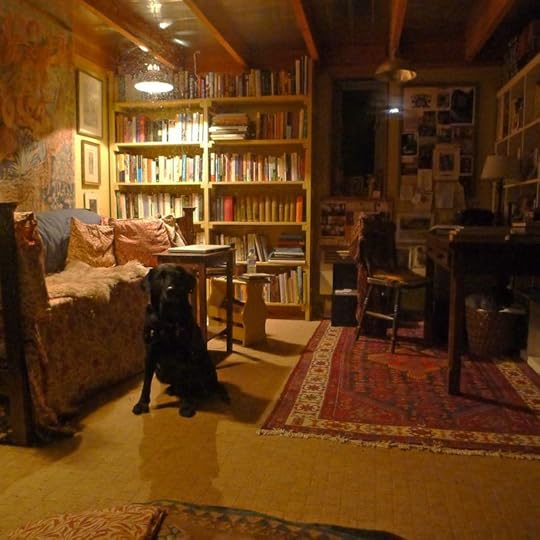 The studio photographs above were all shot through the window glass. The illustration above is "Harvest Moon" from St. Nicholas magazine, 1885; artist unknown.
The studio photographs above were all shot through the window glass. The illustration above is "Harvest Moon" from St. Nicholas magazine, 1885; artist unknown.
October 8, 2014
Stepping into the Wild
"Always in big woods," said Wendell Berry, "when you leave familiar ground and step off alone to a new place, there will be, along with feelings of curiosity and excitement, a little nagging of dread. It is the ancient fear of the unknown, and it is your bond with the wilderness you are going into. What you are doing is exploring. You are understanding the first experience, not of the place, but of yourself in that place. It is the experience of our essential loneliness, for nobody can discover the world for anybody else. It is only after we have discovered it for ourselves that it becomes common ground, and a common bond, and we cease to be alone."
The woodland behind my studio is only a "prettyish kind of a little wilderness," as Jane Austen might describe it; not true wilderness at all. And yet the wild can be found here. It's in the ancient language of oak and owl, and the air-ballet of spore and seed. It's in the midnight revels of the badgers, and the morning light on moss and rock.
“Of course," said Henry David Thoreau, "it is of no use to direct our steps to the woods, if they do not carry us thither. I am alarmed when it happens that I have walked a mile into the woods bodily, without getting there in spirit."
Sometimes Tilly and I roam old, familiar trails grown unfamiliar with each turning of the seasons, and sometimes I just pick a spot and sit. Until my spirit is truly present. Listening. Watching. Learning. Healing. Practicing the art of being still.
"Oh how can I say this: People need wild places," writes Barbara Kingsolver. "Whether or not we think we do, we do. We need to be able to taste grace and know again that we desire it. We need to experience a landscape that is timeless, whose agenda moves at the pace of speciation and glaciers. To be surrounded by a singing, mating, howling commotion of other species, all of which love their lives as much as we do ours, and none of which could possibly care less about us in our place. It reminds us that our plans are small and somewhat absurd. It reminds us why, in those cases in which our plans might influence many future generations, we ought to choose carefully. Looking out on a clean plank of planet earth, we can get shaken right down to the bone by the bronze-eyed possibility of lives that are not our own."
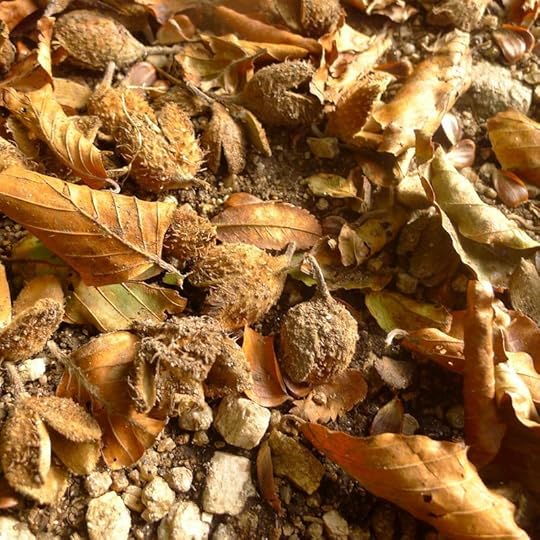 The Wendell Berry quote is from An Unforseen Wilderness, and the Barbara Kingsolver quote from Small Wonder. The woodland photographs were taken yesterday afternoon. Today is stormy, and Tilly (who hates thunder) is hiding under the bedclothes.
The Wendell Berry quote is from An Unforseen Wilderness, and the Barbara Kingsolver quote from Small Wonder. The woodland photographs were taken yesterday afternoon. Today is stormy, and Tilly (who hates thunder) is hiding under the bedclothes.
October 7, 2014
Daybreak in the Devon Hills
From Wanderlust: A History of Walking by Rebecca Solnit:
"These linked paths and roads form a circuit of about six miles that I began hiking ten years ago to ward off my angst during a difficult year. I kept coming back to this route for respite from my work and for my work too, because thinking is generally thought of as doing nothing in a production-oriented culture, and doing nothing is hard to do. It is best done as disguising it as something, and the something closest to nothing is walking. Walking itself is the intentional act closest to the unwilled rhythms of the body, to breathing and the beating of the heart. It strikes a delicate balance between working and idling, being and doing. It is a bodily labor that produces nothing but thoughts, experiences, arrivals."
"Walking, ideally, is a state in which mind, the body, and the world are aligned, as though they were three characters finally in conversation together, three notes suddenly making a chord. Walking allows us to be in our bodies and in the world without being made busy by them. It leaves us free to think without being wholly lost in our thoughts."
"The rhythm of walking generates a kind of rhythm of thinking, and the passage through a landscape echoes or simulates the passage through a series of thoughts. This creates an odd consenance between internal and external passage, one that suggests that the mind is also a landscape of sorts and that walking is one way to traverse it. A new thought often seems like a feature of the landscape that was there all along, as thought thinking were traveling rather than making. And so one aspect of the history of walking is the history of thinking made concrete -- for the motions of the mind cannot be traced, but those of the feet can. Walking can also be imagined as a visual activity, every walk a tour leisurely enough both to see and think over the sights, to assimilate the new into the known. Perhaps this is where walking's peculiar utility for thinkers comes from. The surprises, liberations, and clarifications of travel can sometimes be garnered by going around the block as well as going around the world, and walking travels both near and far. Or perhaps walking should be called movement, not travel, for one can walk in circles or travel around the world immobilized in a seat, and a certain kind of wanderlust can only be assuaged by the acts of the body itself in motion, not the motion of the car, boat, or plane. It is the movement as well as the sights going by that seems to make things happen in the mind, and this is what makes walking ambiguous and endlessly fertile: it is both means and end, travel and destination."
From The Practice of the Wild: Essays by Gary Snyder:
''Walking is the great adventure, the first meditation, a practice of heartiness and soul primary to humankind. Walking is the exact balance between spirit and humility."
 Images above: Nattadon and Meldon Hills after the rain, everything glistening.
Images above: Nattadon and Meldon Hills after the rain, everything glistening.
October 6, 2014
I'm out sick today. I'll be back to Myth & Moor just as...
I'm out sick today. I'll be back to Myth & Moor just as soon as I can.
The image above is "The Artist's Wife Reading" by German Secessionist painter Leopold von Kalckreuth (1855-1928).
October 2, 2014
The things we lose
From A Field Guide to Getting Lost by Rebecca Solnit:
"It is the nature of things to be lost and not otherwise. Think of how little has been salvaged from the compost of time of the hundreds of billions of dreams dreamt since the language to describe them emerged, how few names, how few wishes, how few languages even, how we don't know what tongues the people who erected the standing stones of Britain and Ireland spoke or what the stones meant, don't know much of the language of the Gabrielanos of Los Angeles or the Miwoks of Marin, don't know how or why they drew the giant pictures on the desert floor in Nazca, Peru, don't know much even about Shakespeare or Li Po.
"It is as though we make the exception the rule, believe that we should have rather than that we will generally lose. We should be able to find our way back again by the objects we dropped, like Hansel and Gretel in the forest, the objects reeling us back in time, undoing each loss, a road back from lost eyeglasses to lost toys and baby teeth. Instead, most of the objects form the secret constellations of our irrecoverable past, returning only in dreams where nothing but the dreamer is lost. They must all still exist somewhere: pocket knives and plastic horses don't exactly compost, but who knows where they go in the great drifts of objects sifting through our world?
"Once I found a locket with a crescent moon and a star spelled out in rhinestones on one face, unreadably intricate initials on another, and two ancient photographs inside, and someone must have missed it terribly but no one claimed it, and I have it still. Another time, traveling down a river in one of the last great wildernesses, a roadless place the size of Portugal, I lost a sock early in the trip and a pair of sunglasses later, and I think of them littering the wilderness so clear of such clutter, there still or found by someone who must have wondered about them as I did the woman with the locket.
"On that trip I leaned over the side of the raft and stared straight down for hours at the floor of the river whose name almost no one knows that flows into another little-known river, stared at thousands of stones sliding by, gray, pink, black, gold, under the clearest water in the whole world, floating for miles and days on water I drank straight out of the river. Material objects witness everything and say nothing. Animals say more. And they are disappearing.
"That things should be lost to our knowledge is one thing, in which we don't know where we are or they are; that things should be lost from the earth is another."
From Refuge: An Unnatural History of Family and Place by Terry Tempest Williams:
“The eyes of the future are looking back at us and they are praying for us to see beyond our own time. They are kneeling with hands clasped that we might act with restraint, that we might leave room for the life that is destined to come. To protect what is wild is to protect what is gentle. Perhaps the wilderness we fear is the pause between our own heartbeats, the silent space that says we live only by grace. Wilderness lives by this same grace. Wild mercy is in our hands.”
For National Poetry Day....
If you'd like to make the image larger for ease of reading, click on the image, and then click on it again.
A "coombe" (or "combe"), in case you're wondering, is a small, steep valley. In some places it means a valley without a watercourse, but here in Devon it also refers to valleys with streams at the bottom. The word is pronounced "koom."
"The Night Journey" first appeard in Xanadu III, edited by Jane Yolen (Tor Books).
October 1, 2014
The dance of joy and grief, part II: a meditation on loss
"Every one of us is losing something precious to us. Lost opportunities, lost possibilities, feelings we can never get back again. That’s part of what it means to be alive." - Haruki Murakami (Kafka on the Shore)
"All things of grace and beauty such that one holds them to one's heart have a common provenance in pain. Their birth in grief and ashes." - Cormac McCarthy (The Road)
"[In The Lord of the Rings,] Frodo's quest is a middle-aged man's quest, to lose something and to give something up, which is what you start to realize in your thirties is going to happen to you. Part of the rest of your life is learning to give things up." - Ellen Kushner (Locus interview)
"It is Story that heals us, that shapeshifts us, that saves us." - Sylvia V. Linsteadt
The paintings today are by the great Austrian book illustrator Lisbeth Zwerger, for Hans Christian Andersen's Thumbelina.
The video below is "Thought of You," an animation by Ryan Woodward, with music by The Weepies.
2
September 30, 2014
The dance of joy and grief
Shaken by the news that the earth has lost 50% of its wildlife in the last forty years, I turn to the words of Terry Tempest Williams and the photographs of Joel Sartore. The following passage comes from a radio interview with Williams conducted by Justine Toms in 1994:
"I think about how, for all practical purpses, the Tahoe salmon are gone as we know them," Williams muses. "Less than a hundred years ago, according to the stories of native peoples [on the American west coast], you could walk across the backs of salmon to reach the other side of the river. Now we're lucky if we see one or two. What does that mean? What does that mean in terms of our idea of community? What does that mean in terms of the sustainability of our relations, deep relations?
"So much more than ever before, I feel both the joy of wilderness and the absolute pain in terms of what we are losing. And I think we're afraid of inhabiting, of staying in, this landscape of grief. Yet if we don't acknowledge the losses, then I feel we won't be able to step forward with compassionate intelligence to make the changes necessary to maintain wildness on the planet."
Toms responds: "You talk about the paradox of feeling the joy in what is still available and the pain of what we are losing. Let's stay with the paradox for the moment. How does it help us to stay there and feel both places?"
"I don't know," Williams answers frankly, "except that I believe it's a dance. And I believe that it makes us more human. I love when she writes in her book, An Apprenticeship, that 'what human beings want more than anything else is to become human beings.' If we don't allow ourselves to feel the full range of emotion -- deep joy and deep pain -- then I think we are less than who we can be."
How do we express, even use, this dance as writers, or as other kinds of creators? In "Last Days, Last Words" (Dark Mountain, Issue 3), John Rember advises:
"There's plenty to write about in this word, especially if you can keep existentially funny and honesty grief-stricken about it."
"You ask what gives me hope," says Terry Tempest Williams in a later interview. "Two words: forgiveness and restoration."
My heart beat faster when I read those words. They apply to so many things.
For further reading poised on that narrow ground between joy and grief, I recommend: The Rarest of the Rare: Vanishing Animals, Timeless Worlds by Diane Ackerman, Wild: An Elemental Journey by Jay Griffiths, An Unspoken Hunger: Stories from the Field by Terry Tempest Williams, Singing to the Sound: Visions of Nature, Animals, and Spirit by Brenda Peterson, Dwellings: A Spiritual History of the Living World by Linda Hogan, A Field Guide to Becoming Lost by Rebecca Solnit, Becoming Animal: An Earthly Cosmology by David Abram, Feral: Rewilding the Land, Sea, & Human Life by George Monbiot, and the books produced by The Dark Mountain Project. This isn't an exhaustive list by any means, just a good place to start.
The photographs here are from Joel Sartore's Photo Ark project, sponsored by National Geographic. "For many of Earth’s creatures, time is running out," he explains. "Half of the world’s plant and animal species will soon be threatened with extinction. The goal of the Photo Ark is to document biodiversity, show what’s at stake and to get people to care while there’s still time. More than 3,700 species have been photographed to date, with more to come."
I highly recommend Sartore's beautiful (and heart-breaking) book Rare: Portraits of America's Endangered Species, as well as his other works on endangered animals around the world. You can see more of his photographs, and buy prints of them (to support the Photo Ark project) on Sartore's website.
Terri Windling's Blog
- Terri Windling's profile
- 708 followers


